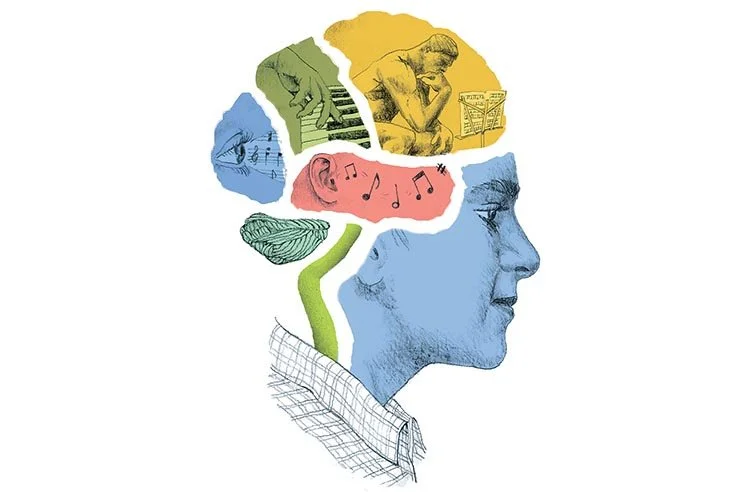Your Brain on Music
A popular class breaks down how our brains respond to music.
Since 2006, two UCF professors — neuroscientist Kiminobu Sugaya and world-renowned violinist Ayako Yonetani — have been teaching one of the most popular courses in The Burnett Honors College. “Music and the Brain” explores how music impacts brain function and human behavior, including by reducing stress, pain and symptoms of depression as well as improving cognitive and motor skills, spatial-temporal learning and neurogenesis, which is the brain’s ability to produce neurons. Sugaya and Yonetani teach how people with neurodegenerative diseases such as Alzheimer’s and Parkinson’s also respond positively to music.
“Usually in the late stages, Alzheimer’s patients are unresponsive,” Sugaya says. “But once you put in the headphones that play [their favorite] music, their eyes light up. They start moving and sometimes singing. The effect lasts maybe 10 minutes or so even after you turn off the music.”
This can be seen on an MRI, where “lots of different parts of the brain light up,” he says. We sat down with the professors, who are also husband and wife, and asked them to explain which parts of the brain are activated by music.
WHAT MUSIC IS THE BEST?
Turns out, whether it’s rock ‘n’ roll, jazz, hip-hop or classical, your gray matter prefers the same music you do. “It depends on your personal background,” Yonetani says. For a while, researchers believed that classical music increased brain activity and made its listeners smarter, a phenomenon called the Mozart effect. Not necessarily true, say Sugaya and Yonetani. In recent studies, they’ve found that people with dementia respond better to the music they grew up listening to. “If you play someone’s favorite music, different parts of the brain light up,” Sugaya explains. “That means memories associated with music are emotional memories, which never fade out — even in Alzheimer’s patients.”
MUSIC CAN…
CHANGE YOUR ABILITY TO PRECEIVE TIME
TAP INTO PRIMAL FEAR
REDUCE SEIZURES
MAKE YOU A BETTER COMMUNICATOR
MAKE YOU STRONGER
BOOST YOUR IMMUNE SYSTEM
ASSIST IN REPAIRING BRAIN DAMAGE
MAKE YOU SMARTER
EVOKE MEMORIES
HELP PARKINSON’S PATIENTS
DID YOU KNOW?
USE IT OR LOSE IT We are all born with more neurons than we actually need. Typically by the age of 8, our brains do a major neuron dump, removing any neurons perceived as unnecessary, which is why it’s easier to teach language and music to younger children. “If you learn music as a child, your brain becomes designed for music,” Sugaya says.
OLDEST INSTRUMENT According to National Geographic, a 40,000-year-old vulture-bone flute is the world’s oldest musical instrument.
HAIRY CELLS The ear only has 3,500 inner hair cells, compared to the more than 100 million photoreceptors found in the eye. Yet our brains are remarkably adaptable to music.
SING ALONG In the Sesotho language, the verb for singing and dancing are the same (ho bina), as it is assumed the two actions occur together.
SEASONAL SONGBIRDS
Sugaya has also conducted neurological studies on songbirds. His research has found that “canaries stop singing every autumn when the brain cells responsible for song generation die.” However, the neurons grow back over the winter months, and the birds learn their songs over again in the spring. He takes this as a sign that “music may increase neurogenesis in the brain.”
